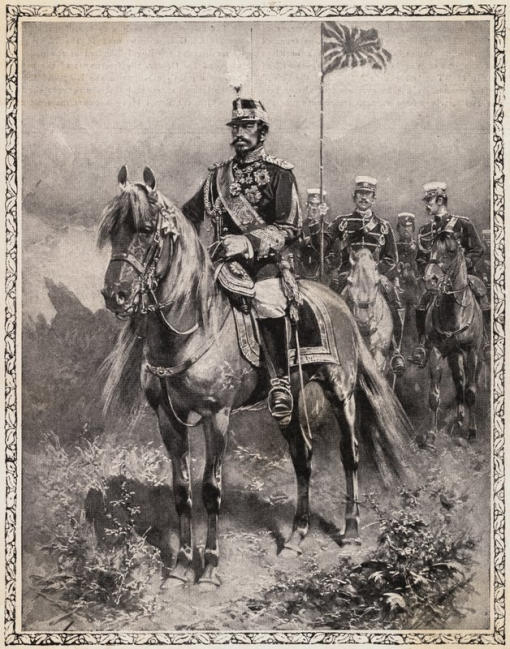Art painting by rice paddy fields in Japan and there is every year, people make new images in their fields by using the rice is planted in accordance yangg patterns which have been made previously. To pewarnaanya with the use of different-type rice. Look at the picture neh .... Starting from the preparation until the rice growing beautifully and showed paintings that they made.
Monday, February 7, 2011
Painting of Meiji Emperor in military regalia
This Japanese painting of the Emperor was reproduced in a British newspaper the day his death was announced in 1912. The painting depicts the Meiji Emperor in full, European style military regalia.
Artistic and photographic displays of the Meiji Emperor were important tools for sending messages to the general Japanese society about both tradition and the need to adopt Western political, technological, and military ideas. Judging by the age of the Emperor, this picture depicts him in the late 19th Century.
Labels: Jaanese painting, Traditional Japanese culture
Posted by iko at 9:29 PM
Japanese Visual Arts
Japanese painting tended to be both more abstract and more naturalistic than Chinese painting, depending on the artist and the subject. Japanese style allowed for greater spontaneity and individuality. Although Japanese landscapes and panoramic scroll painting featured shifting perspective, like Chinese painting, many works focussed on more intimate and limited subjects, permitting more explicit perspective and lighting effects.
Individual portraits, scenes of daily life, studies of plants and animals were done, and these images were handled with spontaneity and individualism. In contrast to the more decorative Chinese aesthetics, Japanese style tends toward a paring down to essentials, an attempt to capture the basic form and characteristics of a specific subject.
Also a style of painting called Ukiyo-e, which became known to Westerners mainly through woodcut prints in the 19th century, developed very distinctive, dramatic ways of using line and color in landscape, portraiture, and other subjects. Ukiyo-e prints had an important effect on the work of Western artists.
Labels: Jaanese painting, Traditional Japanese culture
Posted by iko at 9:27 PM
Subscribe to:
Posts (Atom)















